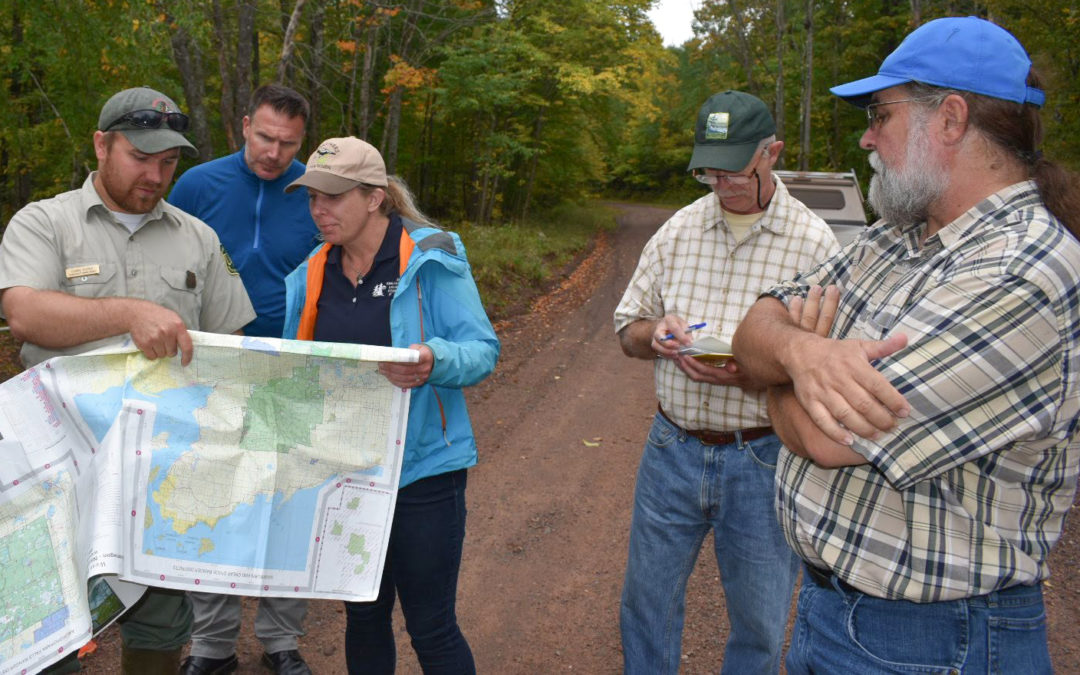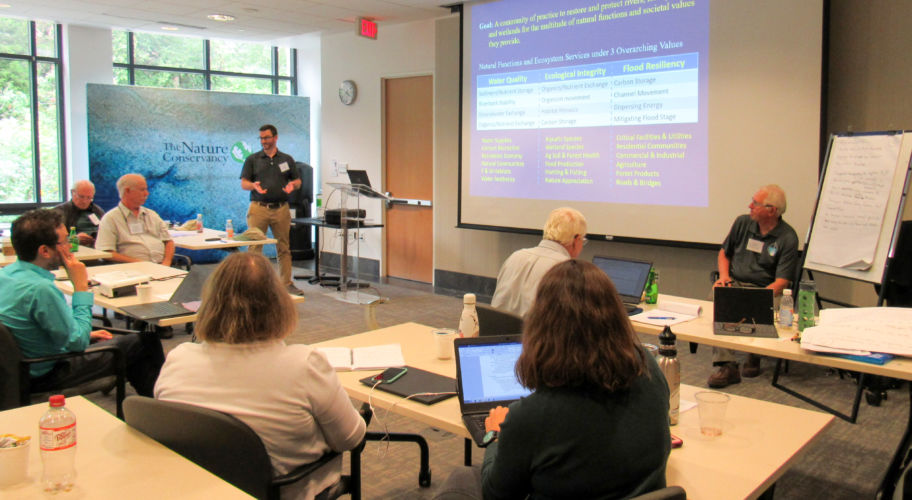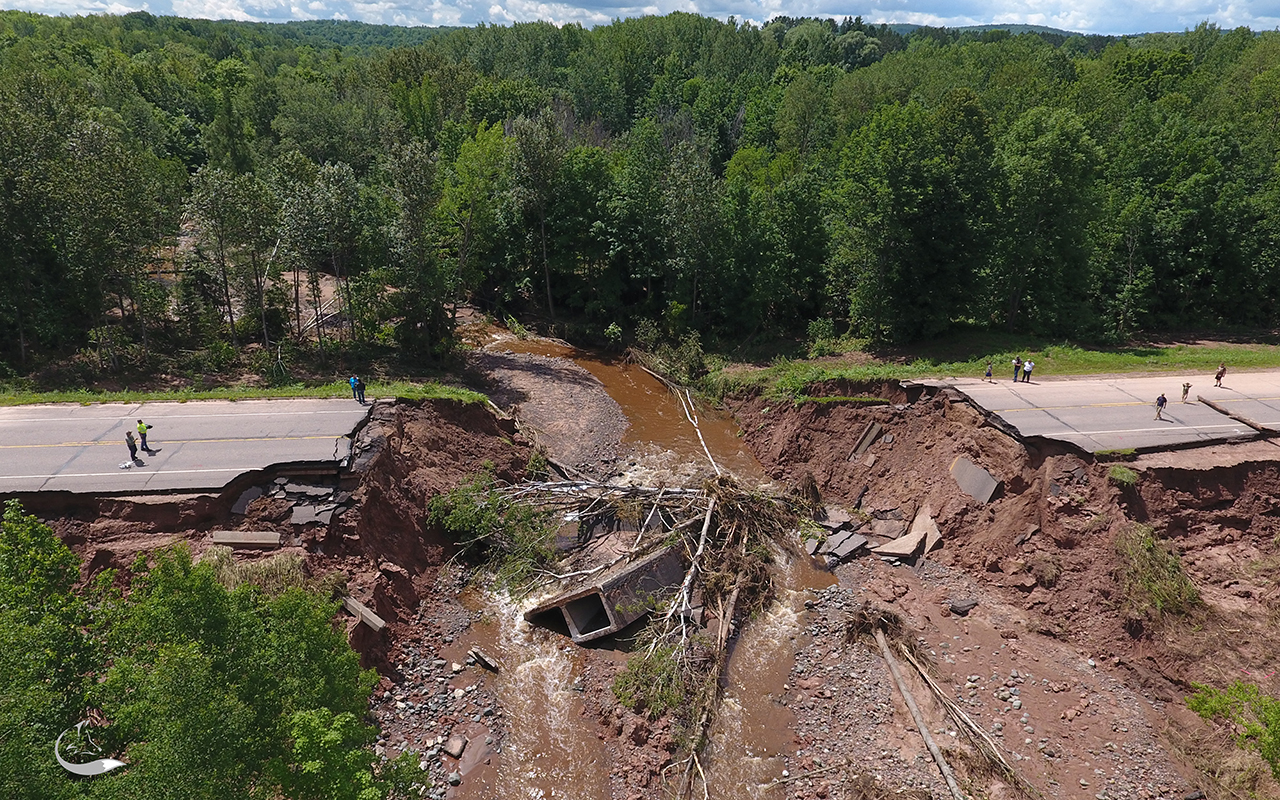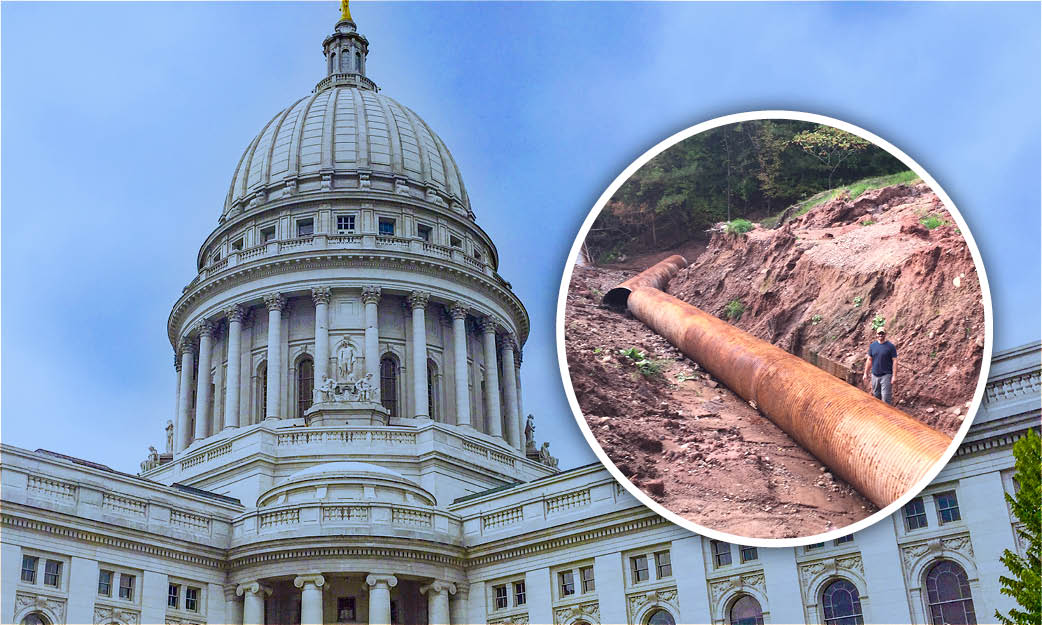Between July 11 and 13, 2016, storms dropped a foot or more of rain across northern Wisconsin’s Lake Superior Basin, including Ashland County. While storm-related damages are a common problem in this region, this storm was particularly severe—two people died and more than $35 million in damages were reported. While healthy wetlands and floodplains help store and slowly release rain and snowmelt, degraded hydrologic conditions in communities like Ashland County mean the area’s wetlands no longer have their natural ability to store floodwaters. Wisconsin Wetlands Association (WWA) is engaging with partners there to help promote awareness of wetlands as effective solutions to flooding challenges. Here’s how we’re collaborating:
1. Listening and sharing information
To make a case for wetlands, we have to understand the story of the landscape’s current vulnerabilities and future potential. We listened to local concerns, observing the watershed conditions and infrastructure challenges, and we compiled a case study examining the link between wetland loss and flood damage in the area. We shared our findings with the community, making a case for how wetland and hydrologic restoration can be a cost effective solution to flooding issues.
2. Convening stakeholders
Wetlands have largely been overlooked in flood mitigation efforts. To effectively promote wetlands as flood management solutions, we seek out a wide-range of partners, including the transportation and emergency management sectors, natural resource managers, and community leaders. We initiate conversations about the challenges and opportunities for natural flood management projects on the landscape. Cultivating these relationships and building trust is invaluable to our understanding of local and tribal communities’ needs and to communicating how strategic restoration can help.
3. Providing guidance and leadership
To help our partners navigate this new natural approach to flood risk management, we provide technical support, identify and help secure project funding, and advocate for additional support from policy makers and state agencies.
And it’s working! A recent series of articles in WisContext delved into how strategic wetland restoration can help communities address flooding, and WWA’s Kyle Magyera is sharing our approach at statewide, regional, and national meetings.
With WWA’s support, Ashland County is the first Wisconsin community to secure FEMA pre-disaster mitigation funding to prioritize natural flood management strategies, and we have two pro-active bills moving in the State Capitol to promote and encourage implementation of hydrologic restoration practices in Ashland County and beyond.
Ashland County is not alone in having flooding concerns. Communities are under water across the state, and they need more tools—including wetlands and floodplain restoration—to help reduce flood risks and damages. Strategic hydrologic restoration offers great promise. And while it isn’t a common flood management practice yet, WWA’s work aims to change that.
Photo by Kyle Magyera.
Related content
Wetlands as solutions goes national
WWA’s Kyle Magyera takes our ‘wetlands as solutions’ message to the nation’s capitol.
Making a case for wetlands
Wetland flood control bill is on the move, again!




